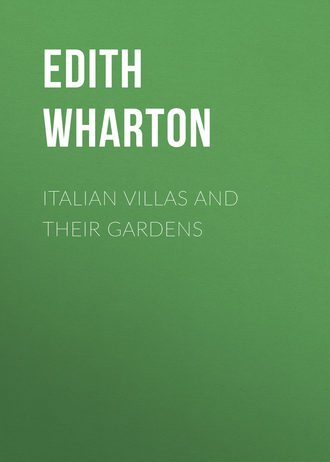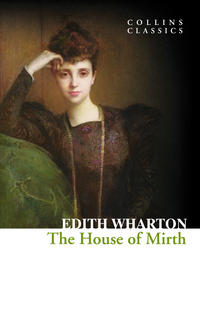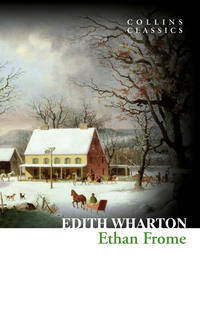 полная версия
полная версияItalian Villas and Their Gardens
Another famous country house, Castellazzo d’Arconate, at Bollate, is even more palatial than the Duke of Modena’s villa at Varese, and, while rather heavy in general outline, has an interesting interior façade, with a long arcade resting on coupled columns, and looking out over a stately courtyard with statues. This villa is said to have preserved a part of its old gardens, but it is difficult of access, and could not be visited at the time when the material for these chapters was collected.
VII
VILLAS OF VENETIA
Writers on Italian architecture have hitherto paid little attention to the villa-architecture of Venetia. It is only within the last few years that English and American critics have deigned to recognize any architectural school in Italy later than that of Vignola and Palladio, and even these two great masters of the sixteenth century have been held up as examples of degeneracy to a generation bred in the Ruskinian code of art ethics. In France, though the influence of Viollet-le-Duc was nearly as hostile as Ruskin’s to any true understanding of Italian art, the Latin instinct for form has asserted itself in a revived study of the classic tradition; but French writers on architecture have hitherto confined themselves chiefly to the investigation of their national styles.
It is only in Germany that Italian architecture from Palladio to Juvara has received careful and sympathetic study. Burckhardt pointed the way in his “Cicerone” and in “The Architecture of the Renaissance in Italy”; Herr Gustav Ebe followed with an interesting book on the late Renaissance throughout Europe; and Herr Gurlitt has produced the most masterly work yet written on the subject, his “History of the Baroque Style in Italy.” These authors, however, having to work in a new and extensive field, have necessarily been obliged to restrict themselves to its most important divisions. Burckhardt’s invaluable “Renaissance Architecture,” though full of critical insight, is rather a collection of memoranda than a history of the subject; and even Herr Gurlitt, though he goes into much greater detail, cannot forsake the highroad for the by-paths, and has consequently had to pass by many minor ramifications of his subject. This is especially to be regretted in regard to the villa-architecture of Venetia, the interest and individuality of which he fully appreciates. He points out that the later Venetian styles spring from two sources, the schools of Palladio and of Sansovino. The former, greatly as his work was extolled, never had the full sympathy of the Venetians. His art was too pure and severe for a race whose taste had been formed on the fantastic mingling of Gothic and Byzantine and on the glowing decorations of the greatest school of colourists the world has known. It was from the warm and picturesque art of Sansovino and Longhena that the Italian baroque naturally developed; and though the authority of Palladio made itself felt in the official architecture of Venetia, its minor constructions, especially the villas and small private houses, seldom show any trace of his influence save in the grouping of their windows. So little is known of the Venetian villa-builders that this word as to their general tendencies must replace the exact information which still remains to be gathered.
Many delightful examples of the Venetian maison de plaisance are still to be found in the neighbourhood of Padua and Treviso, along the Brenta, and in the country between the Euganeans and the Monti Berici. Unfortunately, in not more than one or two instances have the old gardens of these houses been preserved in their characteristic form; and, by a singular perversity of fate, it happens that the villas which have kept their gardens are not typical of the Venetian style. One of them, the castle of Cattajo, at Battaglia in the Euganean Hills, stands in fact quite apart from any contemporary style. This extraordinary edifice, built for the Obizzi of Venice about 1550, is said to have been copied from the plans of a castle in Tartary brought home by Marco Polo. It shows, at any rate, a deliberate reversion, in mid-cinque-cento, to a kind of Gothicism which had become obsolete in northern Italy three hundred years earlier; and the mingling of this rude style with classic detail and Renaissance sculpture has produced an effect picturesque enough to justify so quaint a tradition.
Cattajo stands on the edge of the smiling Euganean country, its great fortress-like bulk built up against a wooded knoll with a little river at its base. Crossing the river by a bridge flanked by huge piers surmounted with statues, one reaches a portcullis in a massive gatehouse, also adorned with statues. The portcullis opens on a long narrow court planted with a hedge of clipped euonymus; and at one end a splendid balustraded stairway à cordon leads up to a flagged terrace with yew-trees growing between the flags. To the left of this terrace is a huge artificial grotto, with a stucco Silenus lolling on an elephant, and other life-size animals and figures, a composition recalling the zoölogical wonders of the grotto at Castello. This Italian reversion to the grotesque, at a time when it was losing its fascination for the Northern races, might form the subject of an interesting study of race æsthetics. When the coarse and sombre fancy of mediæval Europe found expression in grinning gargoyles and baleful or buffoonish images, Italian art held serenely to the beautiful, and wove the most tragic themes into a labyrinth of lovely lines; but in the seventeenth and eighteenth centuries, when the classical graces had taken possession of northern Europe, the chimerical animals, the gnomes and goblins, the gargoyles and broomstick-riders, fled south of the Alps, and reappeared in the queer fauna of Italian grottoes and in the leering dwarfs and satyrs of the garden-walk.
From the yew-tree terrace at Cattajo an arcaded loggia gives access to the interior of the castle, which is a bewilderment of low-storied passageways and long flights of steps hewn in the rock against which the castle is built. From a vaulted tunnel of stone one passes abruptly into a suite of lofty apartments decorated with seventeenth-century frescoes and opening on a balustraded terrace guarded by marble divinities; or, taking another turn, one finds one’s self in a sham Gothic chapel or in a mediæval chemin de ronde on the crenelated walls. This fantastic medley of styles, in conjunction with the unusual site of the castle, has produced several picturesque bits of garden, wedged between the walls and the hillside, or on the terraces overhanging the river; but from the architectural point of view, the most interesting thing about Cattajo is the original treatment of the great stairway in the court.
Six or seven miles from Battaglia, in a narrow and fertile valley of the Euganeans, lies one of the most beautiful pleasure-grounds in Italy. This is the garden of the villa at Val San Zibio. On approaching it, one sees, across a grassy common, a stately and ornate arch of triumph with a rusticated façade and a broken pediment enriched with statues. This arch, which looks as though it were the principal entrance-gate, appears to have been placed in the high boundary-wall merely in order to afford from the highway a vista of the château d’eau which is the chief feature of the gardens. The practice of breaking the wall to give a view of some special point in the park or garden was very common in France, but is seldom seen in Italy, though there is a fine instance of it in the open grille below the Villa Aldobrandini at Frascati.
The house at Val San Zibio is built with its back to the highroad, and is an unpretentious structure of the seventeenth century, not unlike the Villa de’ Gori at Siena, though the Palladian grouping of its central windows shows the nearness of Venice. It looks on a terrace enclosed by a balustrade, whence a broad flight of steps descends to the gently sloping gardens. They are remarkable for their long pleached alleys of beech, their wide tapis verts, fountains, marble benches and statues charmingly placed in niches of clipped verdure. In one direction is a little lake, in another a “mount” crowned by a statue, while a long alley leads to a well-preserved maze with a raised platform in its centre. These labyrinths are now rarely found in Italian gardens, and were probably never as popular south of the Alps as in Holland and England. The long château d’eau, with its couchant Nereids and conch-blowing Tritons, descends a gentle slope instead of a steep hill, and on each side high beech-hedges enclose tall groves of deciduous trees. These hedges are characteristic of the north Italian gardens, where the plane, beech and elm replace the “perennial greens” of the south; and there is one specially charming point at Val San Zibio, where four grass-alleys walled with clipped beeches converge on a stone basin sunk in the turf, with four marble putti seated on the curb, dangling their feet in the water. An added touch of quaintness is given to the gardens by the fact that the old waterworks are still in action, so that the unwary visitor, assailed by fierce jets of spray darting up at him from the terrace steps, the cracks in the flagstones, and all manner of unexpected ambushes, may form some idea of the aquatic surprises which afforded his ancestors such inexhaustible amusement.
There are few gardens in Italy comparable with Val San Zibio; but in Padua there is one of another sort which has kept something of the same ancient savor. This is the famous Botanic Garden, founded in 1545, and said to be the oldest in Italy. The accompanying plan, though roughly sketched from memory, will give some idea of its arrangement. Outside is a grove of exotic trees, which surrounds a large circular space enclosed in a beautiful old brick wall surmounted by a marble balustrade and adorned alternately with busts and statues. The wall is broken by four gateways, one forming the principal entrance from the grove, the other three opening on semicircles in which statues are set against a background of foliage. In the garden itself the beds for “simples” are enclosed in low iron railings, within which they are again subdivided by stone edgings, each subdivision containing a different species of plant.
Padua, in spite of its flat surroundings, is one of the most picturesque cities of upper Italy; and the seeker after gardens will find many charming bits along the narrow canals, or by the sluggish river skirting the city walls. Indeed, one might almost include in a study of gardens the beautiful Prato della Valle, the public square before the church of Santa Giustina, with its encircling canal crossed by marble bridges, its range of baroque statues of “worthies,” and its central expanse of turf and trees. There is no other example in Italy of a square laid out in this park-like way, and the Prato della Valle would form an admirable model for the treatment of open spaces in a modern city.
A few miles from Padua, at Ponte di Brenta, begins the long line of villas which follows the course of the river to its outlet at Fusina. Dante speaks in the “Inferno” of the villas and castles on the Brenta, and it continued the favourite villeggiatura of the Venetian nobility till the middle of the nineteenth century. There dwelt the Signor Pococurante, whom Candide visited on his travels; and of flesh-and-blood celebrities many might be cited, from the famous Procuratore Pisani to Byron, who in 1819 carried off the Guiccioli to his villa at La Mira on the Brenta.
The houses still remain almost line for line as they were drawn in Gianfrancesco Costa’s admirable etchings, “Le Delizie del Fiume Brenta,” published in 1750; but unfortunately almost all the old gardens have disappeared. One, however, has been preserved, and as it is the one most often celebrated by travellers and poets of the eighteenth century, it may be regarded as a good example of a stately Venetian garden. This is the great villa built at Strà, in 1736, for Alvise Pisani, procurator of St. Mark’s, by the architects Prati and Frigimelica. In size and elegance it far surpasses any other house on the Brenta. The prevailing note of the other villas is one of simplicity and amenity. They stand near each other, either on the roadside or divided from it by a low wall bordered with statues and a short strip of garden, also thickly peopled with nymphs, satyrs, shepherdesses, and the grotesque and comic figures of the Commedia dell’ Arte; unassuming villini for the most part, suggesting a life of suburban neighbourliness and sociability. But the Villa Pisani is a palace. Its majestic façade, with pillared central corps de bâtiment and far-reaching wings, stands on the highway bordering the Brenta; behind are the remains of the old formal gardens, and on each side, the park extends along the road, from which it is divided by a high wall and several imposing gateways. The palace is built about two inner courts, and its innumerable rooms are frescoed by the principal Italian decorative painters of the day, while the great central saloon has one of Tiepolo’s most riotously splendid ceilings. Fortunately for the preservation of these treasures, Strà, after being the property of Eugène Beauharnais, was acquired by the Italian government, and is now a “villa nazionale,” well kept up and open to the public.
In the etching of Costa, an elaborate formal garden with parterres de broderie is seen to extend from the back of the villa to the beautifully composed stables which face it. This garden has unfortunately been replaced by a level meadow, flanked on both sides by boschi, with long straight walks piercing the dense green leafage of elm, beech and lime. Here and there fragments of garden-architecture have survived the evident attempt to convert the grounds into a jardin anglais of the sentimental type. There is still a maze, with a fanciful little central tower ascended by winding stairs; there is a little wooded “mount,” with a moat about it, and a crowning temple; and there are various charming garden-pavilions, orangeries, gardeners’ houses, and similar small constructions, all built in the airy and romantic style of which the Italian villa-architect had not yet lost the secret. Architecturally, however, the stables are perhaps the most interesting buildings at Strà. Their classical central façade is flanked by two curving wings, forming charmingly proportioned lemon-houses, and in the stables themselves the stalls are sumptuously divided by columns of red marble, each surmounted by the gilded effigy of a horse.
From Strà to Fusina the shores of the Brenta are lined with charming pleasure-houses, varying in size from the dignified villa to the little garden-pavilion, and all full of interest and instruction to the student of villa-architecture; but unhappily no traces of their old gardens remain, save the statues which once peopled the parterres and surmounted the walls. Several of the villas are attributed to Palladio, but only one is really typical of his style: the melancholy Malcontenta, built by the Foscari, and now standing ruinous and deserted in a marshy field beside the river.
The Malcontenta has all the chief characteristics of Palladio’s manner: the high basement, the projecting pillared portico, the general air of classical correctness, which seems a little cold beside the bright and graceful villa-architecture of Venetia. Burckhardt, with his usual discernment, remarks in this connection that it was a fault of Palladio’s to substitute for the recessed loggia of the Roman villa a projecting portico, thus sacrificing one of the most characteristic and original features of the Italian country house to a not particularly appropriate adaptation of the Greek temple porch.
But Palladio was a great artist, and if he was great in his civic architecture rather than in his country houses, if his stately genius lent itself rather to the grouping of large masses than to the construction of pretty toys, yet his most famous villa is a distinct and original contribution to the chief examples of the Italian pleasure-house. The Villa Capra, better known as the Rotonda, which stands on a hill above Vicenza, has been criticized for having four fronts instead of one front, two sides and a back. It is, in fact, a square building with a projecting Ionic portico on each face—a plan open to the charge of monotony, but partly justified in this case by the fact that the house is built on the summit of a knoll from which there are four views, all equally pleasing, and each as it were entitled to the distinction of having a loggia to itself. Still, it is certain that neither in the Rotonda nor in his other villas did Palladio hit on a style half as appropriate or pleasing as the typical manner of the Roman villa-architects, with its happy mingling of freedom and classicalism, its wonderful adaptation to climate and habits of life, its capricious grace of detail, and its harmony with the garden-architecture which was designed to surround it.
The Villa Capra has not preserved its old gardens, and at the Villa Giacomelli, at Maser, Palladio’s other famous country house, the grounds have been so modernized and stripped of all their characteristic features that it is difficult to judge of their original design; but one feels that all Palladio’s rural architecture lacked that touch of fancy and freedom which, in the Roman school, facilitated the transition of manner from the house to the garden-pavilion, and from the pavilion to the half-rustic grotto and the woodland temple.
The Villa Valmarana, also at Vicenza, on the Monte Berico, not far from the Rotonda, has something of the intimate charm lacking in the latter. The low and simply designed house is notable only for the charming frescoes with which Tiepolo adorned its rooms; but the beautiful loggia in the garden is attributed to Palladio, and this, together with the old beech-alleys, the charming frescoed fountain, the garden-wall crowned by Venetian grotesques, forms a composition of exceptional picturesqueness.
The beautiful country-side between Vicenza and Verona is strewn with old villas, many of which would doubtless repay study; but there are no gardens of note in this part of Veneto, except the famous Giusti gardens at Verona, probably better known to sightseers than any others in northern Italy. In spite of all their charm, however, the dusky massing of their old cypresses, and their winding walks along the cliff-side, the Giusti gardens preserve few traces of their original design, and are therefore not especially important to the student of Italian garden-architecture. More interesting in this connection is the Villa Cuzzano, about seven miles from Verona, a beautiful old house standing above a terrace-garden planted with an elaborate parterre de broderie. Behind the villa is a spacious court bounded by a line of low buildings with a central chapel. The interior of the house has been little changed, and is an interesting example of north Italian villa planning and decoration. The passion of the Italian architects for composition and continuity of design is seen in the careful placing of the chapel, which is exactly on an axis with the central saloon of the villa, so that, standing in the chapel, one looks across the court, through this lofty saloon, and out on the beautiful hilly landscape beyond. It was by such means that the villa-architects obtained, with simple materials and in a limited space, impressions of distance, and sensations of the unexpected, for which one looks in vain in the haphazard and slipshod designs of the present day.
ARCHITECTS AND LANDSCAPE-GARDENERS MENTIONED
ALESSI (GALEAZZO)
1512-1572
Though Alessi was a native of Perugia his best-known buildings were erected in Genoa. Among them are the Villa Pallavicini alle Peschiere, the Villa Imperiali (now Scassi), the Villa Giustiniani (now Cambiaso), the Palazzo Parodi, the public granaries, and the church of the Madonna di Carignano. He also laid out the Strada Nuova in Genoa. His chief works in other places are: the Palazzo Marin (now the Municipio) in Milan; the Palazzo Antinori, and the front of the church of S. Maria del Popolo at Perugia; and the church of the Madonna degli Angeli near Assisi.
ALGARDI (ALESSANDRO)
1602-1654
Algardi, a Bolognese architect, was also distinguished as an engraver and sculptor, and was noted for his figures of children. He built the Villa Belrespiro or Pamphily on the Janiculan, and the Villa Sauli, both in Rome.
AMMANATI (BARTOLOMMEO)
1511-1592
Ammanati, the pupil of Bandinelli and Sansovino, was one of the most distinguished Florentine architects of the sixteenth century, and was also noted for his garden-sculpture. In Florence some of his best work is seen in the Boboli garden and in the court of the Palazzo Pitti, while the bridge of the S. Trinità is considered his masterpiece. In Rome he built the fine façades of the Palazzo Ruspoli and of the Collegio Romano. The rusticated loggia of the Villa Fonte all’ Erta is ascribed to him.
BERNINI (GIOVANNI LORENZO)
1598-1680
Bernini, a Neapolitan by birth, was the greatest Italian architect and sculptor of the seventeenth century. One of his masterpieces in architecture is the church of S. Andrea al Noviziato on the Quirinal, and among his other works in Rome are: the piazza and colonnade of St. Peter’s, the Scala Regia in the Vatican, the Palazzo di Monte Citorio, and the fountains of Trevi and the Tritone; at Pistoja the Villa Rospigliosi, at Terni the cathedral, and at Ravenna the Porta Nuova.
BORROMINI (FRANCESCO)
1599-1667
Borromini, a pupil of Maderna, was, next to Bernini, the most original and brilliant exponent of baroque architecture in Italy. He was born in Lombardy, but worked principally in Rome. Among his best-known buildings are the church of St. Agnes on the Piazza Navona, that of San Carlo alle quattro fontane, and the College of the Propaganda Fide. In conjunction with Bernini and Maderna, he built the Palazzo Barberini in Rome. Some of his best work is seen in the Villa Falconieri at Frascati.
BRAMANTE (DONATO)
1444-1514
Bramante was born at Urbino, but executed all his early work in Milan, producing the church of S. Maria delle Grazie, the Ospedale Maggiore, and the sacristy of San Satiro, which he not only built, but decorated internally. In Lombardy the early Renaissance of building is called the Bramantesque style. Bramante’s works in Rome are: the Tempietto of San Pietro in Montorio, the palace of the Cancelleria, a part of the Vatican, and a part of the Palazzo di San Biagio.
BROWN (LANCELOT)
1715-1783
Lancelot Brown, known as “Capability Brown,” a native of Northumberland, began his career in a kitchen-garden, but, though without artistic training and unable to draw, he became for a time a popular designer of landscape-gardens. He was appointed Royal Gardener at Hampton Court, and laid out the lake at Blenheim. He was considered to excel in water-gardens.
BUONTALENTI (BERNARDO TIMANTE)
1536-1608
Buontalenti, one of the leading Florentine architects of the sixteenth century, was also distinguished as a sculptor and painter. He built the villa of Pratolino and carried on the planning of the Boboli garden. His other works in Florence are: the façades of the Palazzi Strozzi and Riccardi, the Palazzo Acciajuoli (now Corsini), the corridor leading from the Uffizi to the Pitti Palace, and the casino behind San Marco. At Siena, Buontalenti built the Palazzo Reale, and at Pisa, the Loggia de’ Banchi.
CAMPORESI (PIETRO)
B. –, d. 1781
Camporesi, a Roman architect, is mentioned as working with “Moore of Rome” on the grounds of the Villa Borghese.
CARLONE
Several brothers of this name lived in Genoa between 1550 and 1650. They were known as sculptors, painters and gilders, and workers in stucco. The beautiful ceiling of the church of the Santissima Annunziata in Genoa is known to be by one of the Carloni.
CASTELLI (CARLO)
XVII Century
Castelli, who completed the façade of Santa Maria alla Porta, in Milan, was an architect of the school of Maderna. With Crivelli he laid out the gardens of the Isola Bella, near Como.









